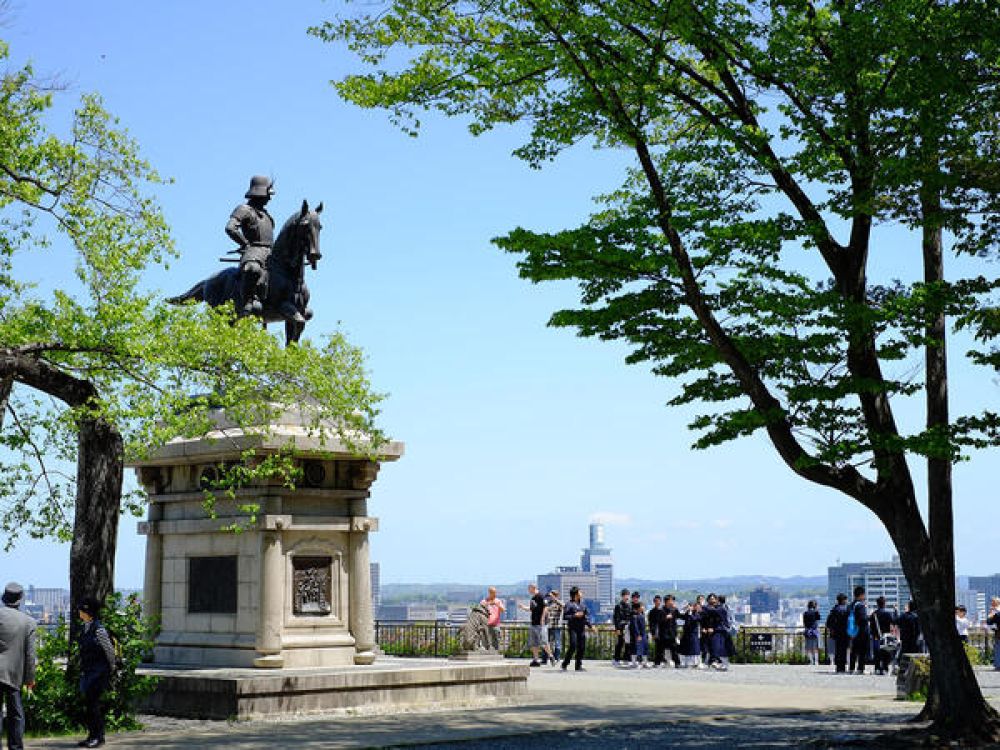

Sendai Castle, also known as Aoba Castle, stands as a historical beacon in Sendai, the largest city of Miyagi Prefecture, Japan. The castle's ruins, perched atop Mount Aoba, oversee the city, serving as a reminder of Japan's feudal past and the legacy of its samurai warriors.
The castle was constructed by the daimyo Date Masamune in 1600 and was renowned for its strategic and defensive features, including its imposing stone walls and broad moats. As the seat of the powerful Date clan, Sendai Castle played a pivotal role in the political and military history of the region throughout the Edo period. Unfortunately, the original castle structures were destroyed over time due to wars, fires, and natural disasters such as earthquakes.
While Sendai Castle's physical presence diminished with the passage of time, its importance in Japanese culture and history did not. It became an important destination for tourists seeking to connect with Japan's samurai heritage. The reconstruction of Aoba Castle's structures and the installation of a statue of Date Masamune began in the 1960s, kicking off Sendai Castle's renaissance as a tourist hub.
Tourism at Sendai Castle has been bolstered by the beautifully maintained castle grounds, the panoramic city vistas from the castle ruins, and the informative museum, which gives visitors a glimpse into the castle's former glory and the life of the Date clan. The city of Sendai celebrates its history with festivals and events, drawing visitors from across Japan and around the world.
In recent years, tourism trends at Sendai Castle have aligned with the global shift towards more interactive and immersive experiences. Innovative efforts, such as augmented reality applications, allow visitors to visualize the castle as it once stood, enhancing the educational aspect of the site. Cultural demonstrations, including samurai parades and period-themed events, further attract those interested in Japan's rich heritage.
Sendai Castle has become an essential part of Sendai's economy, with tourism providing a significant source of income for the city. Its role in promoting Japanese culture is also pivotal, as it educates visitors about feudal Japan and the enduring influence of the samurai era in modern Japanese society. Moreover, the site's inclusion in school excursions and historical programs emphasizes its role in the educational fabric of the country.
In light of its historical and cultural significance, ongoing efforts are made to preserve and restore Sendai Castle's remaining structures. Preservation projects are often coupled with sustainable tourism practices to ensure that the site remains an important destination for future generations. Efforts such as limiting visitor numbers to certain areas, enhancing visitor facilities, and providing multilingual resources are part of the site's evolving tourism strategy.
Sendai Castle continues to captivate the imagination of visitors, helping them connect the past with the present. As tourism trends evolve, Sendai and its castle are poised to remain an enduring symbol of Japan's intricate history and vibrant culture—proudly carrying the legacy of Date Masamune and the spirit of the samurai into the future.